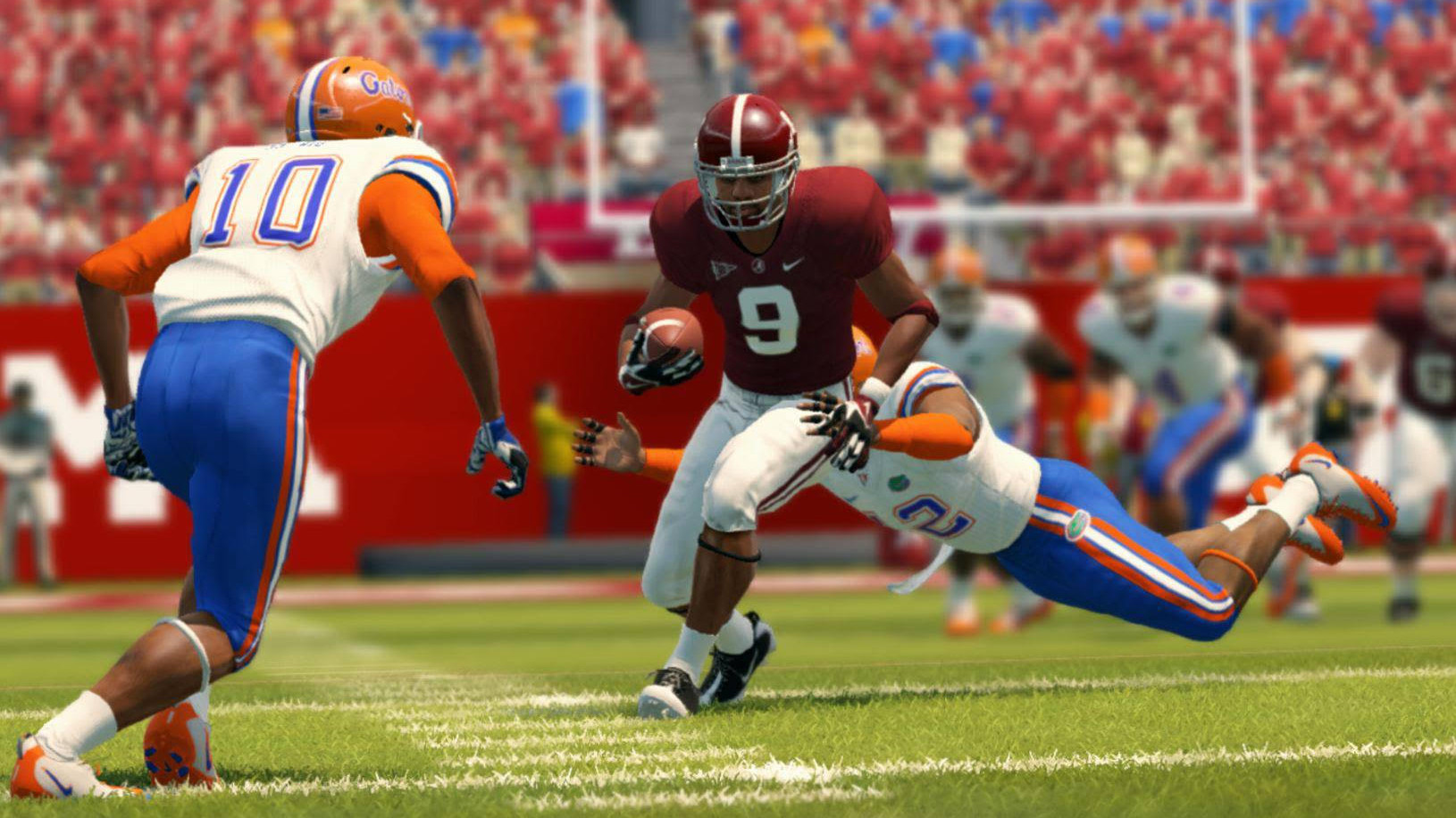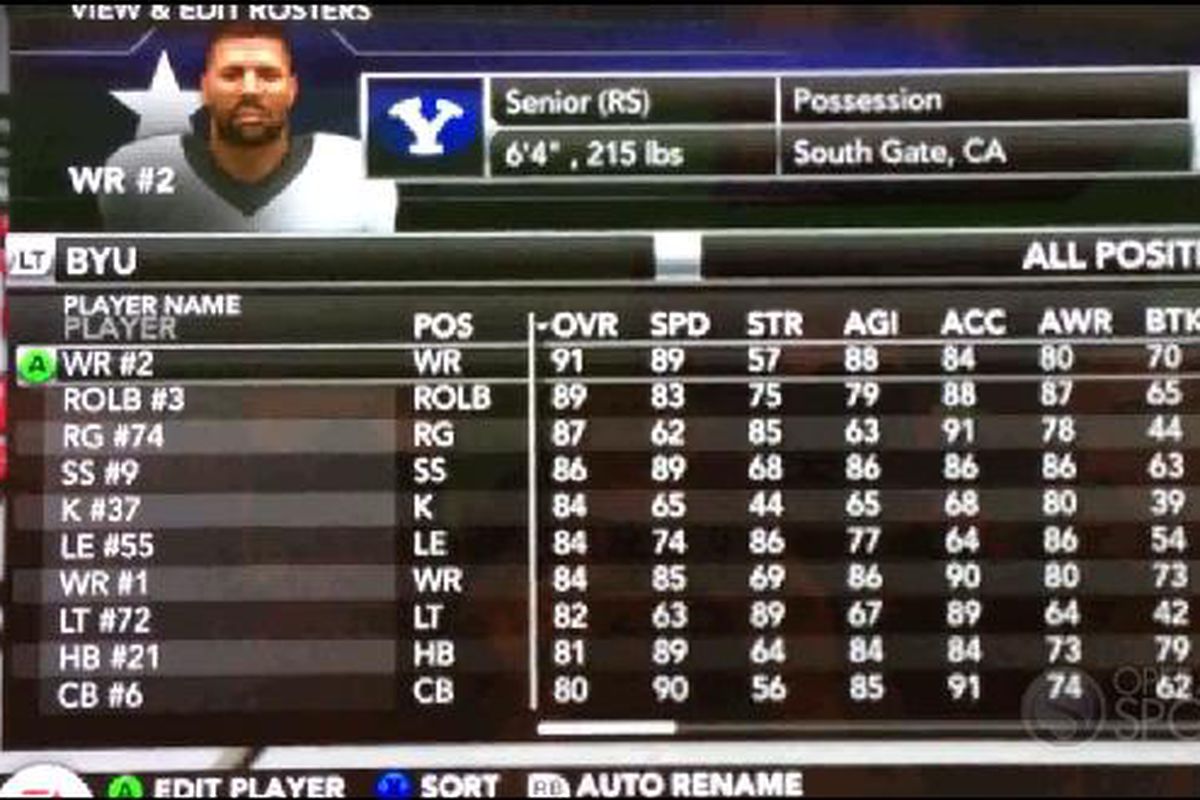EA Sports: Paving a Way into the Future
By Luke Alison
Growing up in the Southeast, I was immersed in a widespread college football culture where just about everybody lived for Saturdays. Die-hard college football fans all across the Southeast take pride in their teams. From a young age passion for college football is ingrained in Southerners as kids are taught to embrace college football. The South Eastern Conference’s success on the field only partially accounts for the South’s preoccupation with college football as the game’s roots and its ties to Southern culture date all the way back to the Civil War. Bleacher Report’s Andrew Hall describes this in an article about the significance of college football when he says, “In the South, college football isn’t merely a societal interest, a cultural phenomenon or a religion. It’s all of those things.” (Hall). This passion for the game is shared among fans across the country, and the creation of EA Sports’ NCAA Football video game series expanded fans’ enthusiasm for the game. By 2013 EA Sports’ NCAA Football had taken the country by storm, giving fans an on-field college football experience. This video game not only allowed fans like me to further embrace the college football culture, but it also united an entire region as the game became one of the most popular games in the country. Just when the South’s obsession for college football was at an all-time high, EA Sports was forced to discontinue the series, greatly impacting the college sports world beyond just video games.
The NCAA Football video game was first published and developed by EA Sports in 1993 with the name Bill Walsh College Football. This game wasn’t nearly as advanced as the most recent ones as no players were named, no official team logos were used, colleges were named by city, and players were identified by number. By 1997, EA Sports acquired the licensing rights to the NCAA name and officially change the name of the game with the release of NCAA Football 98. The game quickly became a commercial success as EA Sports sold millions of copies. The company reported a $3.8 billion profit in net revenue in the 2013 fiscal year alone. While NCAA Football video games were entertaining football fanatics across the country, the ongoing debate on whether NCAA athletes should be paid or not became increasingly popular. By 2013, EA Sports announced that NCAA Football 14 was the last installment in the video game series due to legal issues surrounding the game’s use of college player likeness. The company violated rules set out by the NCAA that didn’t allow players to receive any type of payment for their likeness. Many players sought compensation for the unapproved use of likeness and physical description that the games were using. The most recent game of the series, NCAA Football 14, included descriptions of more than 100 college teams and thousands of college athletes (The Lanier Law Firm). The video games didn’t use players’ names but instead used the same jersey numbers, heights, weights, skin tones, hair colors, and home states in the in-game bios, not only without their permission, but without their compensation. While the various colligate athletes were fighting for their money, the consumers of the game were fighting for continuation of the series. The legal issues at play outweighed the pushback expressed from the game’s consumers as it was clear that EA Sports had used the identities of many student-athletes for profit without their permission. EA Sports reached a settlement that forced them to pay out a total of $60 million among somewhere between 200,000 to 300,000 former college athletes whose likeliness was used in the games.
The legal conflicts that EA Sports had to deal with propelled the debate around the argument on whether college athletes should be paid for all the money they bring to schools across the country. College athletes even began to express their opinions on the matter during the 2013 college football season by writing “APU” on their gameday gear, standing for “All Players United” (Rovell). This created a divide in what was once a united college football community as some people believed that athletes should be compensated while others valued the amateurism of college sports.
Progress has been made on allowing college athletes to make money after NCAA shocked the sports world by announcing it was modifying its rules to allow college athletes to profit from the use of their names, images, and likenesses. This new rule isn’t just about clearing a path for EA Sports to continue making video games. This rule also gives athletes, especially female athletes, “who have few opportunities to make money when they go pro, a chance to earn some endorsements.” (Campbell). For decades athletes have been the only people in college sports who don’t get paid while coaches and schools receive all the benefits. This could facilitate the return of the popular NCAA Football series. EA Sports and their NCAA Football series has paved a road into the future that will eventually allow all student-athletes to profit from the revenue that they earn, changing the life of college athletes forever.



Works Cited:
Campbell, Alexia Fernández. “Free Labor from College Athletes May Soon Come to an End.” Vox, Vox, 3 Oct. 2019, www.vox.com/identities/2019/10/3/20896738/california-fair-pay-to-play-act-college-athletes. This source was a very opinionated article and gave me a great understanding of why NCAA players had the right to get paid for all the money they were making for EA Sports and the NCAA. Overall, this helped me further undertand this topic.
Hall, Andrew. “College Football: The Pride and Joy of the South.” Bleacher Report, Bleacher Report, 3 Oct. 2017, bleacherreport.com/articles/1875948-college-football-the-pride-and-joy-of-the-south. This source allowed me to further understand the situation as a whole. This was a more recent article that talked about the possible return of the game. This source also helped me in writting my introduction paragraph on college football’s significance in the South.
Rovell, Darren. “EA Sports Settles with Ex-Players.” ESPN, ESPN Internet Ventures, 26 Sept. 2013, www.espn.com/college-football/story/_/id/9728042/ea-sports-stop-producing-college-football-game. I already knew that EA Sports was using players’ likeness but this source gave me a better understanding of how EA Sports was using players’ likeness. This source highlighted the reason NCAA players fought for their money and explained how the game didn’t ask for the players permission.
Skol, Sergio. “NCAA Football 14.” Wikipedia, Wikimedia Foundation, 4 May 2020, en.wikipedia.org/wiki/NCAA_Football_14. This source allowed me to understand the background of EA Sports and their NCAA Football 14 series. Having this good foundation also gave me great search terms, allowing me to find good sources.
“The Lanier Law Firm Joins Lawsuit Against EA Sports Over ‘NCAA Football’ Video Games: Mass Tort Lawyer of the Year Joins Team Representing Former Student-Athlete.” PR Newswire, Aug 07, 2013. ProQuest, https://search.proquest.com/docview/1418178143?accountid=14882. This source gave me great examples of real lawsuits agaisnt EA Sports by former players. This source clearly explained why EA Sports was in the worng and gave me a better understanding of where both sides were coming from.